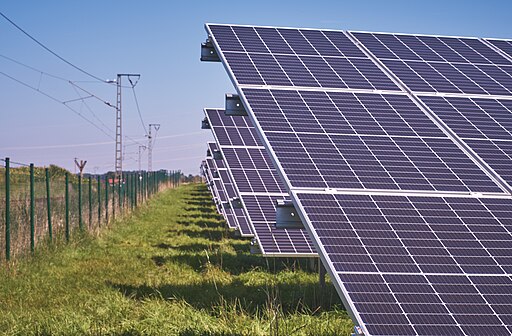Solar Energy

There are many ways to harvest the sun’s energy, whether by focusing its rays on water-filled pipes, reflecting it to a tower for collection in concentrated form at high temperatures, or, most familiarly, with photovoltaic (PV) panels. (Another, more traditional way, to collect solar energy is via biological processes; we call these systems “trees”.)
Some of these approaches are only practical at very large scale. For residential installations, there are really only two options, each serving a different purpose. Most commonly, PV panels are placed on a rooftop (or sometimes, ground-mounted) to generate electricity, which can then either be stored in an on-site battery for use as needed, or fed back to the power grid.
A second way to harvest the sun’s energy is via hot water collectors, which use a trough-shaped mirror to focus sunlight on a pipe carrying circulating water. These can provide heated water either for daily use or, in some climates, for space heating.
Further Reading
- Another Ingenious Idea; Floating Solar, It’s Being Done in Asia and Could Be Done Here — Canary Media 01-27-25
- How to Help Your School District Go Solar — Canary Media 10-31-24
- An Idea from Germany: Balcony Solar Panels — Canary Media — 09-26-24
- Some Practical Help If You Are Thinking of Going Solar — Sierra Club and EnergySage
- Solar Power Shattering Records Worldwide — Canary Media — 09-01-24
- Pennsylvania Solar Incentives, Tax Credits and Rebates of 2024 — Forbes — 08-31-24
- How to Protect Yourself from Solar Scams — Canary Media — 08-22-24
- Massively Polluted Hanford Nuclear Weapons Site may Become Country’s Largest Solar Farm — Canary Media — 07-30-24
- Churches Benefitting from IRA Grants to Solarize Their Roofs — Canary Media 07-29-24
- Community Solar Expands Access to clean Energy — Canary Media 07-01-24
- Urge PA Senators to Pass HB 1842 to Enable Community Solar — Clean Air Council
- Research Shows Floating Solar Panels Could Unlock a Lot of Energy — Canary Media — 06-17-24
- New Solar Would Help Keep Electric Grid Going in Summer Heat — PA Capitol-Star 05-24-24
- PA DEP Lays out Process, Provides Toolkit to Get Solar in Schools
- Solarize Delco – Get help installing solar
